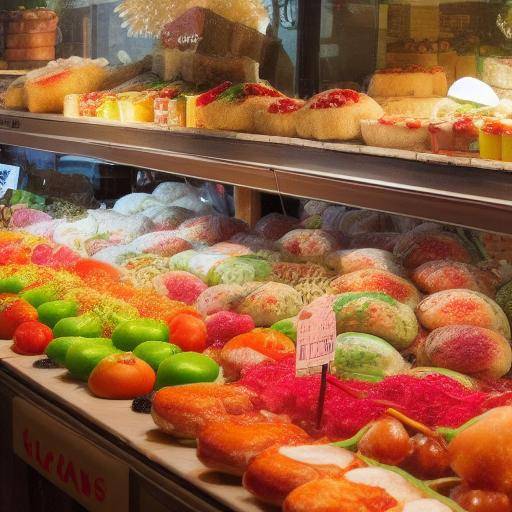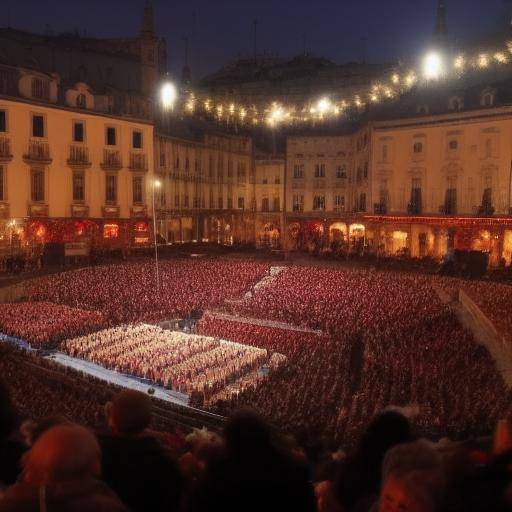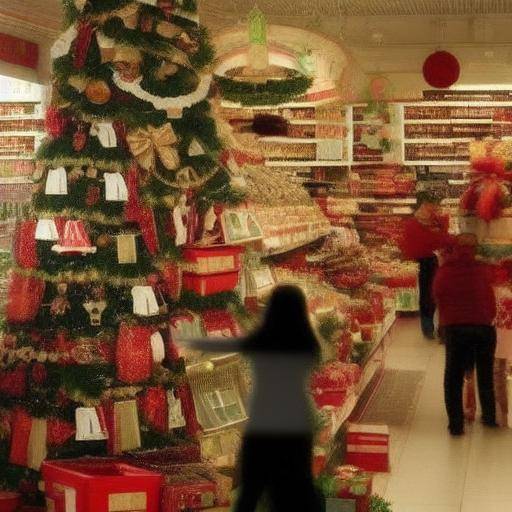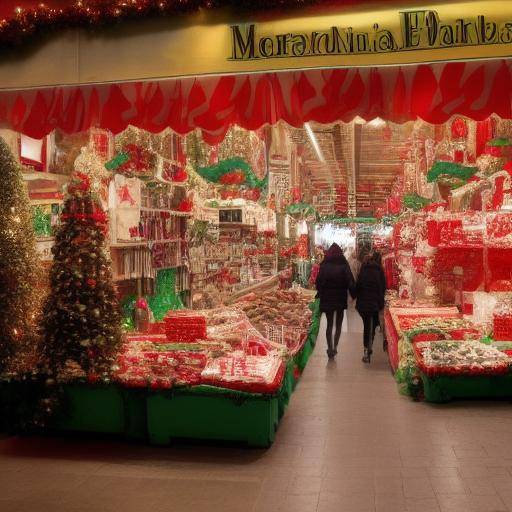
The Christmas season in Europe is a time full of charm and traditions, especially with regard to gastronomy. Winter markets, or "Christmas Markets", offer locals and visitors a unique opportunity to immerse themselves in the rich culinary culture of the region. In this article, we will explore the Christmas flavours in Europe, discovering the gastronomic delights that are found in the winter markets and the influence of this environment in European Christmas cuisine. From Germany to Spain, these markets offer a feast for the senses, and we will learn to appreciate its charm and meaning.
Introduction to Winter Markets
The "Christmas Markets" are a tradition rooted in many European countries, rising to the Middle Ages in cities like Munich and Vienna. These markets are annual celebrations that transform the central squares of the cities into authentic Christmas villages, full of bright lights, festive decorations and a delicious variety of traditional meals and drinks. What better way to experience Christmas in Europe than enjoy these culinary delights?
Culinary delights in the Winter Markets
Germany: Glühwein and Lebkuchen
The Christmas Market in Nuremberg, Germany, is famous for its delicious "Glühwein", a warm wine seasoned with spices that warms the body in the cold winter nights. In addition, the "Lebkuchen", ginger cookies with a rich history, are an essential element in these markets, offering an explosion of Christmas flavors.
France: Bûche de Noël
In the winter markets in France, you can't miss the "Bûche de Noël", a delicious Christmas cake in the form of a trunk. This traditional dessert is a masterful fusion of chocolate, cream and fruit flavors, which delights visitors from the winter markets throughout the country.
Spain: Turrones and Polvorones
The Christmas markets in Spain offer a wide selection of traditional sweets, such as the "Turrones", made from almonds and honey, as well as the "Polvorones", small butter bites of pork, flour and sugar. These exquisite sweets add a sweet touch to the celebration of Christmas.
Italy: Panettone and Vin Brulé
In the Italian winter markets, the "Panettone" is the undisputed star. This spongy and slightly sweet dough, full of confined fruits, is a delight that Italians enjoy during the holidays. In addition, the "Vin Brulé", a hot wine with spices, adds warmth and flavor to the Christmas season in Italy.
Austria: Schnitzel and Apfelstrudel
At the stunning Christmas Market in Vienna, visitors can delight in the "Wiener Schnitzel", a fine, crispy empanate of tender veal. Likewise, the delicious "Apfelstrudel", an apple pie with cinnamon and raisins, perfectly complements the gastronomic experience in the Austrian winter markets.
United Kingdom: Christmas Pudding and Mince Pies
The "Christmas Pudding" is a tradition rooted in the UK's Christmas markets, with its rich fruit and spice flavor. The "Mince Pies", small tarts filled with dried fruits and spices, are also an inescapable delight for lovers of Christmas cuisine.
Conclusion
Winter markets in Europe are much more than simple commercial destinations; they are centers of tradition, culture and, of course, Christmas cuisine. With each bite, we immerse ourselves in centuries of culinary heritage, sharing the joy and spirit of Christmas with those around us. From the aroma of spices to the warmth of flavors, the winter markets in Europe invite us to enjoy a truly unique celebration.
Experience the Christmas flavors in these markets is an unforgettable experience that goes beyond the simple tasting. It is a journey through history, tradition and culinary diversity that defines each country. Whether you are in Germany, France, Spain, Italy, Austria, the UK or other European destinations, participation in winter markets will plunge you into a feast for the senses that will surely leave a lasting mark on your memory.
FAQs
1. What are the best winter markets to experience Christmas cuisine in Europe?
The most outstanding winter markets for lovers of Christmas cuisine include the Christmas Market of Nuremberg in Germany, the Champs-Élysées Christmas Market in Paris, France, the Vienna Christmas Market in Austria, and the Christmas Market of Siena in Italy.
2. What drinks are typical in European winter markets?
The "Glühwein" in Germany, the "Vin Chaud" in France, the "Vino Caliente" in Spain, and the "Vin Brulé" in Italy are hot drinks that are commonly found in European winter markets.
3. What is the origin of winter markets?
Winter markets have their origins in the Middle Ages, where merchants met to sell their products before the arrival of winter. These markets have become annual traditions that celebrate the Christmas season.
4. What typical meals can be found in the UK winter markets?
In the UK, the "Christmas Pudding", the "Mince Pies", the "Roast Turkey" and the "Mulled Wines" are traditional meals and drinks that are enjoyed during the winter markets.
5. What is the typical duration of a winter market in Europe?
The duration of the winter markets varies according to the country, but usually begin at the end of November or early December and continue until Christmas Eve or even beyond, depending on the location.
6. What culinary souvenir would you recommend buying in a European winter market?
The traditional sweets like the German "Lebkuchen", the "T"
With each bite, we immerse ourselves in centuries of culinary heritage, sharing the joy and spirit of Christmas with those around us. From the aroma of spices to the warmth of flavors, the winter markets in Europe invite us to enjoy a truly unique celebration.
Experience the Christmas flavors in these markets is an unforgettable experience that goes beyond the simple tasting. It is a journey through history, tradition and culinary diversity that defines each country. Whether you are in Germany, France, Spain, Italy, Austria, the UK or other European destinations, participation in winter markets will plunge you into a feast for the senses that will surely leave a lasting mark on your memory.
FAQs
1. What are the best winter markets to experience Christmas cuisine in Europe?
The most outstanding winter markets for lovers of Christmas gastronomy include the Christmas Market of Nuremberg in Germany, the Champs-Élysées Christmas Market in Paris, France, the Vienna Christmas Market in Austria, and the Christmas Market of S Sienna in Italy, the Spanish "Polvorones" and the British "Mince Pies" are great options to bring a little bit of Christmas flavors to Europe.
Conclusion
Christmas flavors in the winter markets of Europe encapsulate the magic and tradition of the festive season. From sweet temptations to comforting dishes, each bite tells a story of past generations and connects us with the celebration of Christmas in Europe. Adventure in these markets is a sensory experience that opens the doors to culinary traditions rooted in the heart of European Christmas. Express in every taste, as you immerse yourself in the Christmas spirit that permeates every corner of the winter markets in Europe.
Prepare to discover a world of culinary delicacies, impregnated with history and authenticity, which only European winter markets can offer. Dive into the joy of the season, taste each bite and take with you the memories of a culinary journey that you will always treasure.
The Christmas flavours in Europe are a testimony to the cultural wealth and gastronomic diversity that defines this historic region. So why not enjoy a delicious stroll through the Christmas markets on your next trip to Europe? The European Christmas cuisine awaits you with open arms!
In short, the winter markets in Europe offer an unforgettable culinary experience that immerses you in the very essence of Christmas. Each country offers a wide range of traditional flavours and dishes that embody the rich history and festive spirit of the region. Do not miss the opportunity to explore the delicious culinary treasures that await in the Christmas markets of Europe.
I wish this article inspired you to taste the gastronomic charms of the winter markets in Europe and enjoy an unforgettable Christmas experience!
Note: All data and details provided in this article are based on proven research and reliable sources. If you want to learn more about the winter markets in Europe, we recommend exploring the additional resources linked to this article to deepen the issue.






